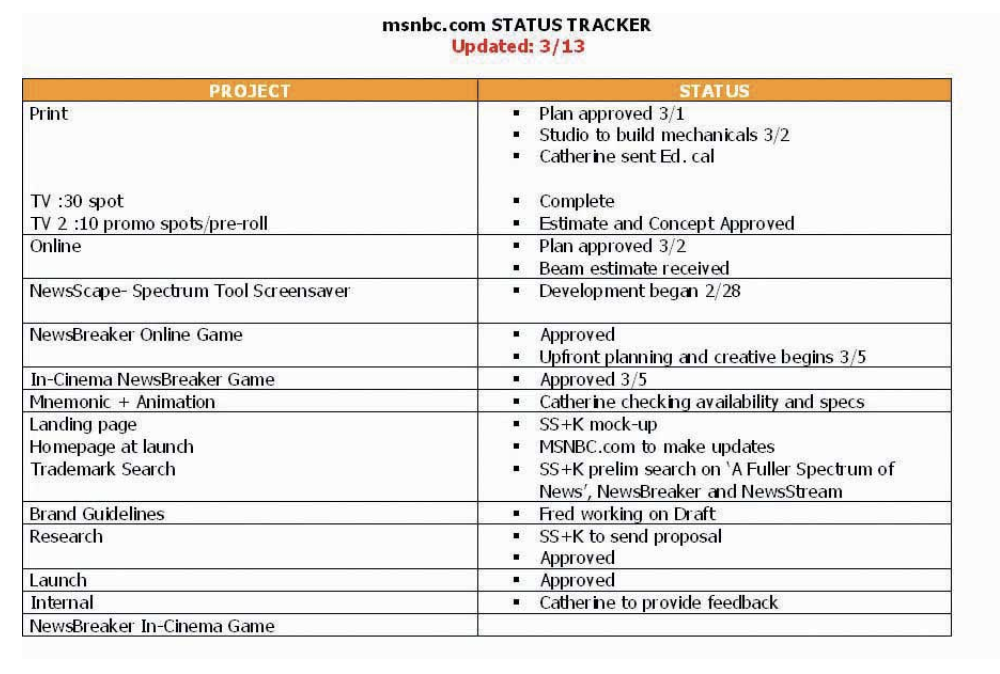13.2: msnbc.com - Un Portafolio Campaing
- Page ID
- 66643
La campaña consistió en muchas piezas interrelacionadas. Todos ellos atados al objetivo principal de la campaña de construir una imagen de marca sólida y positiva para msnbc.com. SS+K y sus socios lograron esto diseñando múltiples ejecuciones usando múltiples plataformas, desde la impresión convencional hasta innovaciones, incluido el primer juego en cine que permitió a la audiencia participar en la ejecución.
Para hacer un seguimiento de todos estos elementos, SS+K se refirió a una tabla de estado, una herramienta que muchas agencias utilizan para hacer un seguimiento del avance de las muchas partes móviles involucradas en una campaña. Los gráficos de estado se adaptan a las necesidades específicas de cuentas o campañas y son administrados por los equipos de gestión de cuentas y gestión de proyectos.

Así es como se veían todas las piezas de la campaña en el lanzamiento.
La primera parte del trabajo se centró en el logotipo.


